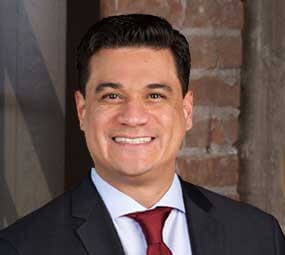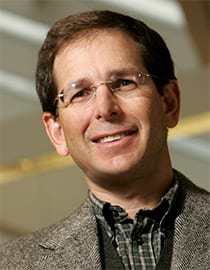Please E-mail suggested additions, comments and/or corrections to Kent@MoreLaw.Com.
Help support the publication of case reports on MoreLaw
Date: 11-27-2016
Case Style:
Robin Antonick v. Electronic Arts, Inc.

Case Number: 14-15298
Judge: Andrew D. Hurwitz
Court: United States Court of Appeals for the Ninth Circuit on appeal from the Northern District of California (San Francisco County)
Plaintiff's Attorney:

| 
|
 |  |

|  |
 |  |
Jennifer Murray |
Defendant's Attorney:
 |  |
 |  |
Description: In this case, the plaintiff claimed copyright infringement.
But the contents of the copyrighted work and the allegedly
infringing works were never introduced into evidence. The
district court held that the claim failed as a matter of law.
We agree, and affirm.
I. Background
Robin Antonick developed the computer code for the original
John Madden Football game for the Apple II computer (“Apple II Madden”).
Electronic Arts, Inc. (“EA”) released Apple II Madden in 1988.
Apple II Madden, the first football video game with 11 players on
each side, was an instant hit, the best seller of any sports video
game of its time. Antonick subsequently programmed Madden games for
the Commodore 64 and IBM-compatible computers (“IBM Madden”).
In 1989, Antonick began working for EA on Madden games for the Nintendo
and Sega Genesis entertainment systems. But in August 1990, EA told him
to stop—Nintendo was becoming obsolete, and EA had decided on a new
direction for the Sega game, hiring Park Place Productions to create a
version with “more of an arcade style.” In November 1990, EA released
its first version of Sega Madden. In late 1991 or early 1992, EA released
Antonick’s last Madden game, an update of IBM Madden.
Each year from 1992 to 1996, EA released Madden games for Sega Genesis
and Super Nintendo (“Super Nintendo Madden”). The Madden games have
remained incredibly lucrative, selling millions of copies and even
ANTONICK V. ELECTRONIC ARTS 5
attracting a loyal fan base among professional football
players.
Antonick’s 1986 contract with EA defined “a custom
computer software program known as John Madden
Football” designed for the “Apple [II] Family of Computers”
as the “Work,” and provided that Antonick would receive
royalties on any “Derivative Work,” defined as “any
computer software program or electronic game which . . .
constitutes a derivative work of the Work within the
meaning of the United States copyright law.” Antonick
received no royalties for Sega Madden or Super Nintendo
Madden, which EA assured him were not Derivative Works.
In 2011, Antonick brought this diversity action against
EA, seeking contract damages in the form of unpaid royalties
for Sega Madden and Super Nintendo Madden. The district
court bifurcated the trial. In Phase I, the jury found that the
statute of limitations did not bar Antonick’s claims. Phase
II involved the merits of Antonick’s claims. Antonick
produced evidence that Park Place was rushed and
inadequately staffed, and argued that it copied his code to
meet the demanding deadline for the first Sega Madden.
Antonick’s expert, Michael Barr, opined that Sega Madden
was substantially similar to certain elements of Apple II
Madden. In particular, Barr opined that the games had
similar formations, plays, play numberings, and player
ratings; a similar, disproportionately wide field; a similar
eight-point directional system; and similar variable names,
6 ANTONICK V. ELECTRONIC ARTS
including variables that misspelled “scrimmage.”1 But
neither the source code for Apple II Madden—the “Work”—
nor the source code of any allegedly infringing works were
introduced into evidence. Nor were images of the games at
issue introduced.2
Nonetheless, the jury found that the Sega Madden games
were Derivative Works under the 1986 contract. The district
court then granted judgment as a matter of law (“JMOL”) to
EA, holding that Antonick had not provided sufficient
evidence of copyright infringement, because neither the
source code used for Apple II Madden nor Sega Madden was
in evidence.
II. Discussion
A. The Sega Claims
Although this is a contract case, because royalties are
available to Antonick under the 1986 contract only for a
derivative work of Apple II Madden “within the meaning of
the United States copyright law,” he had to prove copyright
infringement to prevail on his contract claims. Antonick was
thus required to prove that EA “copied protected elements of
the work.” Jada Toys, Inc. v. Mattel, Inc., 518 F.3d 628, 636
(9th Cir. 2008) (citations omitted). “Absent direct evidence
of copying, proof of infringement involves fact-based
1 Barr was only able to examine a partial draft version of the Apple
II Madden source code, because the complete final version could not be
found. The draft version he examined was not introduced into evidence.
2 EA showed the jury a video of Sega Madden, but the jury did not
view a video of Apple II Madden.
ANTONICK V. ELECTRONIC ARTS 7
showings that the defendant had ‘access’ to the plaintiff’s
work and that the two works are ‘substantially similar.’” Three
Boys Music Corp. v. Bolton, 212 F.3d 477, 481 (9th Cir. 2000) (citation omitted).
“The Ninth Circuit employs a two-part test for determining
whether one work is substantially similar to another.”
Benay v. Warner Bros. Entm’t, Inc., 607 F.3d 620, 624 (9th Cir. 2010) (citation omitted).
[A plaintiff] must prove both substantial similarity under
the “extrinsic test” and substantial similarity under the
“intrinsic test.” The “extrinsic test” is an objective
comparison of specific expressive elements.
The “intrinsic test” is a subjective comparison that
focuses on whether the ordinary, reasonable audience
would find the works substantially similar in the total concept and feel of the works.
Id. (citations and question marks omitted). The district court
granted JMOL to EA under the “intrinsic test” because
“the jury
had no evidence of Apple II Madden or Sega Madden as a
whole to enable it to make this subjective comparison.”
The district court was correct. Antonick’s claims rest
on the contention that the source code of the Sega Madden
games infringed on the source code for Apple II Madden.
But, none of the source code was in evidence. The jury
therefore could not compare the works to determine
substantial similarity. See Seiler v. Lucasfilm, Ltd.,
808 F.2d 1316, 1319 (9th Cir. 1987) (“There can be
no proof of ‘substantial similarity’ and thus of
copyright infringement unless Seiler’s works are
juxtaposed with Lucas’ and their
8 ANTONICK V. ELECTRONIC ARTS
contents compared.”) (applying the best evidence rule in a
copyright action); id. (“[P]roof of the infringement claim
consists of the works alleged to be infringed.”); accord
Airframe Sys., Inc. v. L-3 Commc’ns Corp., 658 F.3d 100,
107 (1st Cir. 2011) (“Having presented no evidence
sufficient to prove the content of its registered source code
versions, Airframe cannot show that any of its registered
works is substantially similar to the allegedly infringing M3
program.”); Gen. Universal Sys., Inc. v. Lee, 379 F.3d 131,
146 (5th Cir. 2004) (per curiam) (“Without providing its own
source code for comparison, GUS did not satisfy the
requirement that the infringed and infringing work be
compared side-by-side.”). And, absent evidence of the
copyrighted work and the allegedly infringing works, the
record is insufficient to allow appellate review of the jury’s
verdict. See, e.g., Olson v. Nat’l Broad. Co., 855 F.2d 1446,
1448, 1451 (9th Cir. 1988) (granting JMOL to copyright
defendant because no reasonable jury could have found
substantial similarity); cf. Shaw v. Lindheim, 919 F.2d 1353,
1355 (9th Cir. 1990) (“We have frequently affirmed
summary judgment in favor of copyright defendants on the
issue of substantial similarity.”).
Antonick argues there was no need to introduce the
source code (or even the games at issue), because Park Place
had access to the Apple II Madden code and a motive to copy
it, and his expert and others testified to the similarity of the
works. These arguments fail for three reasons.
First, the evidence at most demonstrates access and a
possible motive to copy; it does not establish that the
“protected portions of the works are substantially similar.”
ANTONICK V. ELECTRONIC ARTS 9
Jada Toys, 518 F.3d at 637.3 Access alone cannot establish
copyright infringement. Shaw, 919 F.2d at 1361.
Second, our law is clear that expert testimony cannot
satisfy a plaintiff’s burden of proof under the intrinsic test,
which “depend[s] on the response of the ordinary reasonable
person.” Brown Bag Software v. Symantec Corp., 960 F.2d
1465, 1475 (9th Cir. 1992) (quoting Sid & Marty Krofft
Television Prods., Inc. v. McDonald’s Corp., 562 F.2d 1157,
1164 (9th Cir. 1977)).4 Barr’s testimony may have been
3 If the range of possible expression is narrow, the copyrighted work
is entitled to thin protection, and a plaintiff must show virtual identity
between the copyrighted work and the allegedly infringing work. See
Mattel, Inc. v. MGA Entm’t, Inc., 616 F.3d 904, 913–14 (9th Cir. 2010).
If the range of possible expression is wide, the work is entitled to broad
protection and the plaintiff must show only substantial similarity. Id.
The district court held that “[d]ue to the narrow range of possible
expression for a football video game and the fact that only two of the ten
similar elements are protectable,” Antonick’s work was entitled only to
thin protection, requiring him to show virtual identity of the works as a
whole. Antonick disputes that conclusion, arguing that he needed to
show only substantial similarity. We need not resolve that dispute,
because we conclude that Antonick, having presented insufficient
evidence of the works as a whole, loses under either standard.
4 Antonick’s contrary cases are from other circuits; of the two Ninth
Circuit cases he cites, one is a memorandum disposition holding expert
testimony admissible in a case in which the relevant works themselves
were in evidence, Lucky Break Wishbone Corp. v. Sears Roebuck & Co.,
373 F. App’x 752, 755–56 (9th Cir. 2010), and the other concerned a
special master’s report, not expert testimony, Johnson Controls, Inc. v.
Phoenix Control Sys., Inc., 886 F.2d 1173, 1176 (9th Cir. 1989).
10 ANTONICK V. ELECTRONIC ARTS
enough to establish substantial similarity under the extrinsic
test, but it cannot satisfy Antonick’s burden of production
under the intrinsic test. Id.
Third, the lay testimony was about how the games
appeared, not how they were coded—and Antonick does not
assert a copyright interest in Apple II Madden’s audiovisual
appearance, only in its coding.
Antonick argues that copying was shown by testimony
of Michael Kawahara, an Apple II Madden assistant
producer. When asked whether he recognized any of the
plays in Sega Madden from Apple II Madden, Kawahara
answered affirmatively, stating that “[it] was – well, since
the interface was – well, it was the same as we used in the
Apple II. It was very easy to look at all of the plays in the
Genesis version and they looked identical . . . to the original
Apple II version.” This comment, however, does not
establish that the source code for the two games were
substantially similar. Kawahara had no programming
responsibilities for Apple II Madden; did not understand the
Apple II Madden code; did not see the Sega Madden code;
and admitted that he had no knowledge about differences in
the games’ codes.
Antonick also cites a statement by Richard Hilleman, an
EA representative, that it was “possible” he had told an
Antonick is not alone in contending that experts should be allowed
to help juries assess the holistic similarity of technical works such as
computer programs. See Brown Bag, 960 F.2d at 1478 (Sneed, J.,
concurring); Comput. Assocs. Int’l, Inc. v. Altai, Inc., 982 F.2d 693, 713
(2d Cir. 1992). But, given our precedents, that argument must be
addressed to an en banc court.
ANTONICK V. ELECTRONIC ARTS 11
interviewer that “the Sega game took the system’s approach
from Mr. Antonick’s game and just simply put a different
aesthetic on top of it.” But, an “approach” is an idea that
cannot be copyrighted—only its expression in code is
protectable—and Sega Madden could have used Apple II
Madden’s “approach” to football video games without
violating the copyright laws. See Bikram’s Yoga Coll. of
India, L.P. v. Evolation Yoga, LLC, 803 F.3d 1032, 1037–38
(9th Cir. 2015) (“[R]ecognizing this vital distinction
between ideas and expression, courts have routinely held
that the copyright for a work describing how to perform a
process does not extend to the process itself.”).
Finally, Antonick argues that EA’s post-verdict Rule
50(b) motion for JMOL regarding the intrinsic test should
not have been considered because the pre-verdict Rule 50(a)
motion argued only that the evidence was insufficient to
show substantial similarity between the two elements of the
code that the district court had ruled protectable, rather than
discussing similarity of the works as a whole. See EEOC v.
Go Daddy Software, Inc., 581 F.3d 951, 961 (9th Cir. 2009)
(“Because it is a renewed motion, a proper post-verdict Rule
50(b) motion is limited to the grounds asserted in the predeliberation
Rule 50(a) motion.”). But, both motions argued
that the failure to place the source code in evidence was fatal
to Antonick’s claim that EA had copied his work. That
preserved the argument. Id. (“Rule 50(b) ‘may be satisfied
by an ambiguous or inartfully made motion’ under Rule
50(a).”) (quoting Reeves v. Teuscher, 881 F.2d 1495, 1498
(9th Cir. 1989)).
B. The Super Nintendo Claims
Antonick sought royalties for the Super Nintendo
Madden games under Amendment 1 to his contract, which
12 ANTONICK V. ELECTRONIC ARTS
provided for royalties for derivative works for platforms in
the “Same Microprocessor Family” as the Apple II. The
Amendment defined “Microprocessor Family” as “a single
microprocessor and all related microprocessors that utilize
the same instruction set and have the same instruction and
data word size.”
Antonick’s expert, Garry Kitchen, testified that the
Apple II used the 6502 processor, which had an 8-bit data
word size and 56 instructions of up to 3 bytes in length. The
Super Nintendo used the more advanced 5A22 processor,
which in its native mode used a 16-bit data word size and at
least 92 instructions of up to 4 bytes in length; but which
could also act as a 6502 processor for purposes of backwards
compatibility. Kitchen testified that this backwards
compatibility meant that the microprocessors were in the
same “family,” as the industry uses the term. He
acknowledged that Super Nintendo Madden was designed to
use that system’s advanced capabilities, utilizing a larger
instruction set, longer data word sizes, and longer
instructions than Apple II Madden.
After Kitchen’s testimony, the district court dismissed
the Super Nintendo claims, holding that the Super Nintendo
was not in the same Microprocessor Family as the Apple II
under the contractual definition, because it used a larger
instruction set, instruction size, and data size. Antonick
argues that the two processors were in the same family as a
practical matter because they could use the same instruction
set, instruction size, and data size. Antonick’s factual
premise may well be correct. But we deal here with contract
interpretation, and the word “could” is not in the contractual
definition. Instead, the contract requires that, to be in the
same family, two processors must “utilize the same
instruction set and have the same instruction and data word
ANTONICK V. ELECTRONIC ARTS 13
size.” The Apple II and Super Nintendo processors have
different instruction sizes and data word sizes.5 The district
court therefore did not err in dismissing the Super Nintendo
derivative work claims.
Antonick argues in the alternative that EA breached the
contract by failing to give him the opportunity to develop the
Super Nintendo Madden game. The contract provided that,
if Antonick developed any Derivative Works for new
microprocessor families, he would be entitled “to written
notice and the opportunity to develop additional Derivative
Works for the New Microprocessor Family.” Antonick
developed a Madden game for the Apple II GS, which he
argues, and EA does not appear to deny, is in the same
microprocessor family as the Super Nintendo. As damages,
he seeks royalties based on the actual Super Nintendo game
sales.
The district court dismissed this claim because a factfinder
would have to speculate on whether Antonick could
have developed such a work, how well an Antonickdeveloped
Super Nintendo game would have sold, and what
royalty rate the parties would have agreed upon; Antonick’s
expert report did not address these issues. The district court
was correct; the jury could not have determined Antonick’s
damages from the alleged breach to a “reasonable certainty.”
Sargon Enters., Inc. v. Univ. of S. Cal., 288 P.3d 1237, 1254
(Cal. 2012). Moreover, even if the district court erred, there
was no harm, because Antonick’s failure to introduce any
5 Arguably, the chips “utilize the same instruction set” because the
6502 uses a subset of the 5A22’s instructions.
14 ANTONICK V. ELECTRONIC ARTS
source code precluded a finding that Super Nintendo Madden was a Derivative Work.
C. The Development Aids
The contract also gave EA a license to create derivative works using certain tools designed by Antonick (“Development Aids”), and provided that the parties would “negotiate in good faith” for further licenses if EA wanted to use the aids to create non-derivative works. Antonick alleges that EA used the aids to create non-derivative works without seeking that license.
The district court dismissed this claim because Antonick offered no evidence of purported damages. Antonick did not show the value of similar licenses or the benefit that EA received from using the Development Aids. Instead, Antonick cited only the report of his damages expert, which simply made generic royalty calculations based on existing sales without explaining how those calculations were relevant to the Development Aid claim. The district court correctly kept this unsubstantiated claim from the jury. See Amelco Elec. v. City of Thousand Oaks, 38 P.3d 1120, 1130, 1132 (Cal. 2002).
Outcome: The judgment of the district court is AFFIRMED.
Plaintiff's Experts:
Defendant's Experts:
Comments: